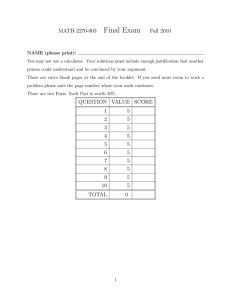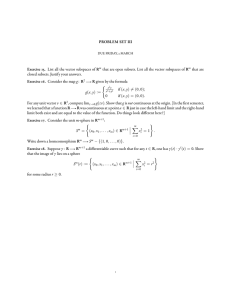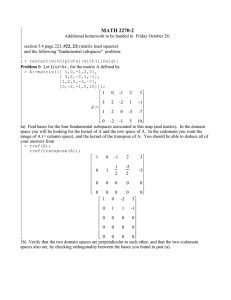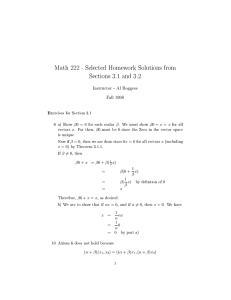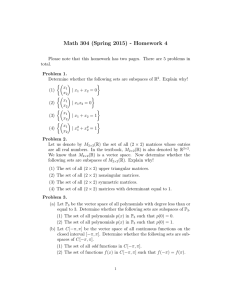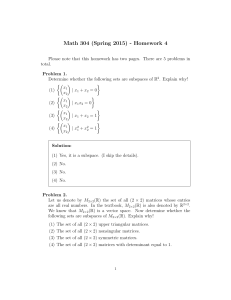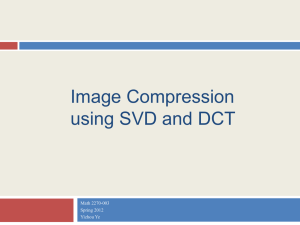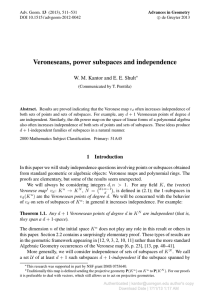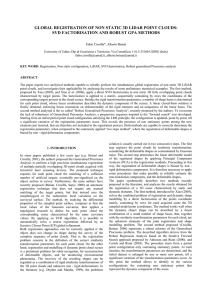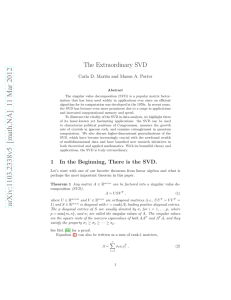Final Exam Guide MATH 2270-003 Fall 2010
advertisement
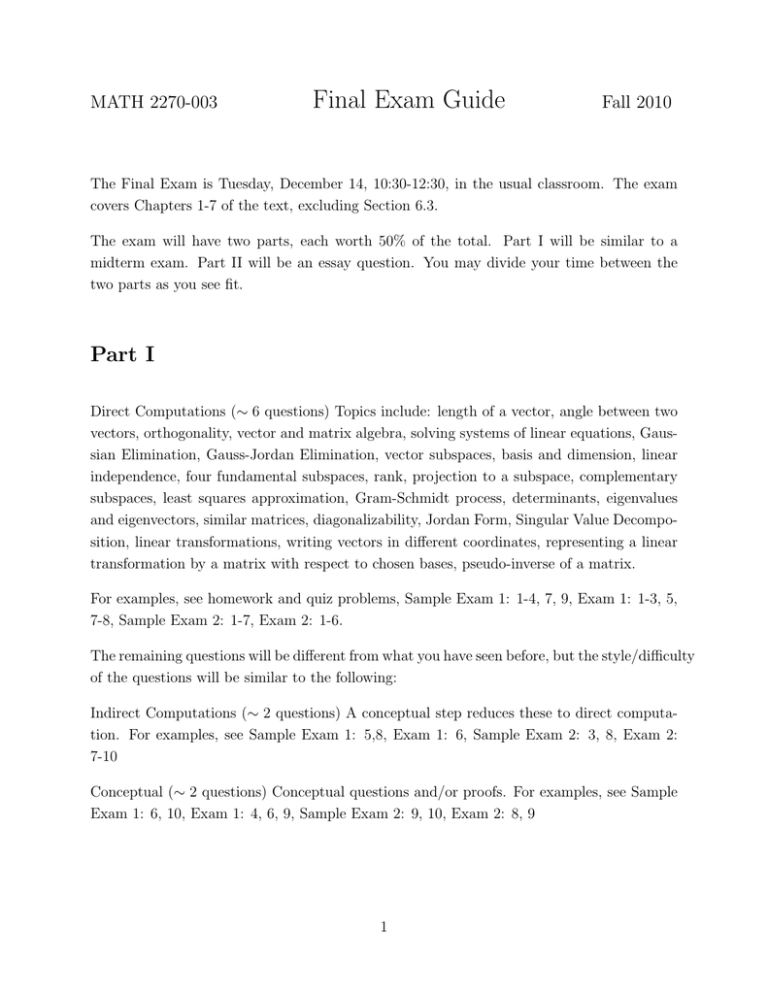
MATH 2270-003 Final Exam Guide Fall 2010 The Final Exam is Tuesday, December 14, 10:30-12:30, in the usual classroom. The exam covers Chapters 1-7 of the text, excluding Section 6.3. The exam will have two parts, each worth 50% of the total. Part I will be similar to a midterm exam. Part II will be an essay question. You may divide your time between the two parts as you see fit. Part I Direct Computations (∼ 6 questions) Topics include: length of a vector, angle between two vectors, orthogonality, vector and matrix algebra, solving systems of linear equations, Gaussian Elimination, Gauss-Jordan Elimination, vector subspaces, basis and dimension, linear independence, four fundamental subspaces, rank, projection to a subspace, complementary subspaces, least squares approximation, Gram-Schmidt process, determinants, eigenvalues and eigenvectors, similar matrices, diagonalizability, Jordan Form, Singular Value Decomposition, linear transformations, writing vectors in different coordinates, representing a linear transformation by a matrix with respect to chosen bases, pseudo-inverse of a matrix. For examples, see homework and quiz problems, Sample Exam 1: 1-4, 7, 9, Exam 1: 1-3, 5, 7-8, Sample Exam 2: 1-7, Exam 2: 1-6. The remaining questions will be different from what you have seen before, but the style/difficulty of the questions will be similar to the following: Indirect Computations (∼ 2 questions) A conceptual step reduces these to direct computation. For examples, see Sample Exam 1: 5,8, Exam 1: 6, Sample Exam 2: 3, 8, Exam 2: 7-10 Conceptual (∼ 2 questions) Conceptual questions and/or proofs. For examples, see Sample Exam 1: 6, 10, Exam 1: 4, 6, 9, Sample Exam 2: 9, 10, Exam 2: 8, 9 1 Part II The essay question will cover the Fundamental Theorem of Linear Algebra and the SVD Theorem. Together, these are the heart of the course; show me that you understand them. You should think about this question before the exam, but you will have to write down your answer during the exam period without using notes. The following will appear verbatim: State the Fundamental Theorem of Linear Algebra, Parts 1 and 2, and the Singular Value Decomposition (SVD) Theorem. Explain, in plain English, what they mean and how they complement each other. Give an explicit (actual numbers in the entries) example of a matrix M such that each of the four fundamental subspaces is nontrivial, and such that the two bases in the SVD are not the same. Compute the SVD of M and identify orthonormal bases for the four fundamental subspaces. 2
